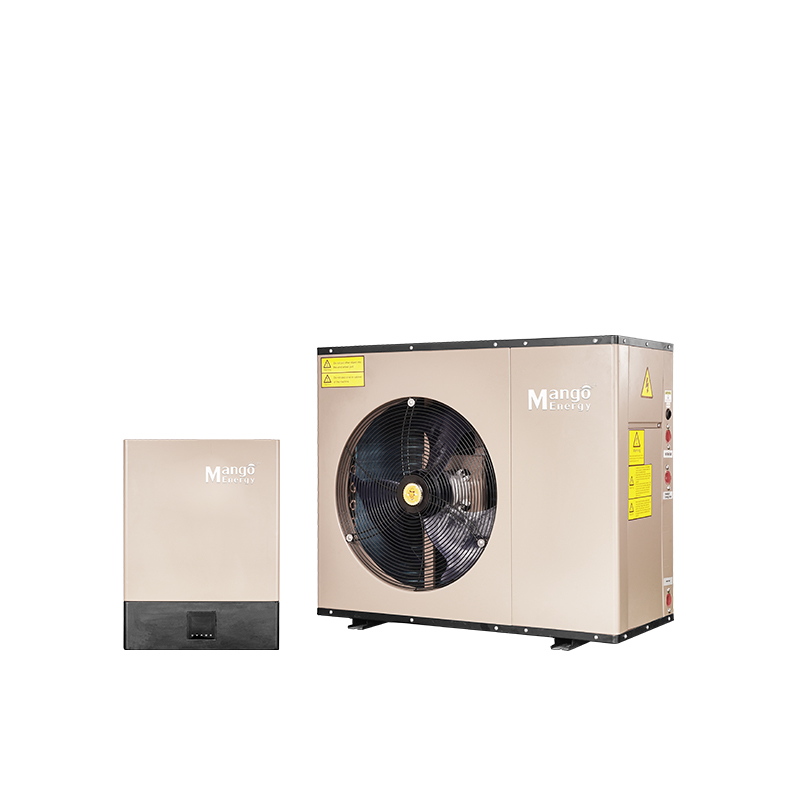
A split heat pump consists of two main components: an indoor unit and an outdoor unit. The outdoor unit contains the compressor and condenser, while the indoor unit houses the evaporator and fan. These units are connected by refrigerant lines, allowing the system to transfer heat between the indoors and outdoors efficiently. In heating mode, the heat pump extracts heat from the outside air (even at low temperatures) and transfers it indoors. In cooling mode, the process is reversed, with the system removing heat from the indoor air and releasing it outside.
1. Energy Efficiency of Split Heat Pumps
The primary advantage of split heat pumps is their energy efficiency. Traditional heating systems, such as electric furnaces or boilers, often convert electricity or fuel directly into heat, leading to significant energy losses. In contrast, heat pumps move heat rather than generate it, resulting in much higher efficiency levels. The coefficient of performance (COP) of a heat pump, which measures the ratio of heating or cooling output to energy input, typically ranges from 3 to 4, meaning that for every unit of energy consumed, the system delivers 3 to 4 units of heating or cooling.
2. Split Heat Pump Factories and Production Innovations
The manufacturing of split heat pumps has seen significant advancements, driven by increasing demand and technological innovations. Split heat pump factories are now focusing on improving the efficiency, durability, and environmental impact of these systems. Advanced materials, improved refrigerants, and more precise manufacturing processes contribute to higher quality and more reliable products.
One notable example is the mango split heat pump, a cutting-edge innovation that utilizes environmentally friendly refrigerants and boasts an exceptionally high COP. Developed through extensive research and development, the mango split heat pump represents a significant leap forward in both performance and sustainability.

3. Commercial Heat Pumps: Expanding Applications
While split heat pumps are widely used in residential settings, their applications in commercial environments are also growing. Commercial heat pumps are designed to handle larger spaces and more demanding conditions, providing efficient heating and cooling for offices, retail spaces, and industrial facilities. These systems are often integrated with advanced controls and automation, allowing for precise temperature management and further energy savings.
The energy savings potential of split heat pumps in commercial settings is substantial. Heating and cooling account for a significant portion of energy consumption in commercial buildings, often exceeding 40% of total energy use. By replacing conventional HVAC systems with split heat pumps, businesses can significantly reduce their energy bills and carbon footprint. Additionally, many commercial heat pumps can be integrated with renewable energy sources, such as solar panels, further enhancing their sustainability.

4. The Mango Split Heat Pump: A Case Study
The mango split heat pump serves as an excellent example of the potential for innovation in this field. Named for its compact, modular design reminiscent of the shape of a mango, this heat pump is designed to maximize efficiency while minimizing environmental impact. It uses a low-global-warming-potential (GWP) refrigerant and features advanced inverter technology that allows the system to adjust its output precisely to the demand, reducing energy waste.
Conclusion:
The energy savings potential of split heat pumps is undeniable. By leveraging advanced technology and innovative design, these systems offer a sustainable alternative to traditional heating and cooling methods. The growing production capabilities at split heat pump factories and the expansion of commercial heat pumps underscore the versatility and efficiency of this technology. The mango split heat pump, with its impressive performance and environmental credentials, exemplifies the future of energy-efficient climate control solutions.
As more businesses and homeowners adopt split heat pumps, the cumulative impact on energy consumption and carbon emissions will be significant. This transition not only promises economic benefits through reduced energy bills but also contributes to broader environmental goals, helping to mitigate climate change and promote a more sustainable future. The continued development and deployment of split heat pumps, particularly in commercial settings, will play a crucial role in achieving these objectives.


